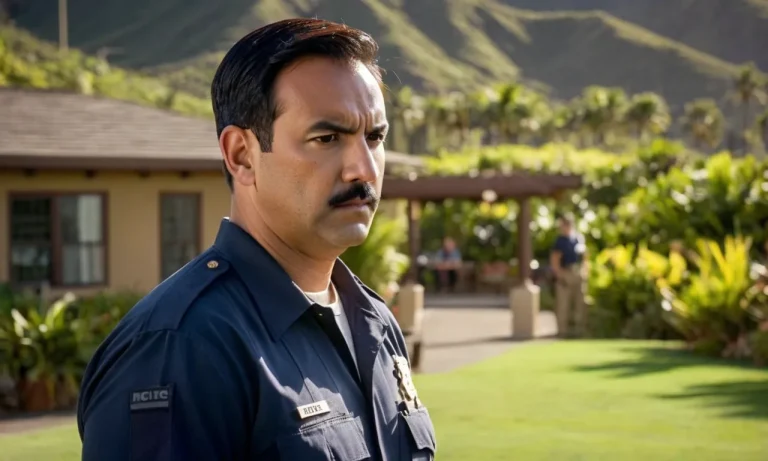Save money on your next flight
Skyscanner is the world’s leading flight search engine, helping you find the cheapest flights to destinations all over the world.
With its lush landscapes, world-renowned beaches, and vibrant culture, Hawaii remains one of the most popular tourist destinations in the United States. However, visiting the Aloha State can come at a cost—especially when it comes to filling up your gas tank.
If you’re short on time, here’s a quick answer to your question: the average price for a gallon of regular gasoline in Hawaii as of December 2022 is around $5.19.
In this comprehensive guide, we’ll take a close look at Hawaii’s high gas prices, what’s behind the extra costs, and tips for saving money on fuel during your island getaway.
Current Gas Prices in Hawaii
Statewide Average
As of December 2023, the statewide average price for a gallon of regular unleaded gas in Hawaii is $5.31, which is among the highest in the nation. Prices have fallen from highs above $5.50 per gallon earlier this year but remain well above the national average of $3.30 per gallon.
Hawaii’s gas prices have historically been higher than the continental US due to factors like island geography, lack of pipelines and refineries, and taxes. However, Russia’s invasion of Ukraine and resulting sanctions and supply chain issues have exacerbated the situation over the past year.
Prices by Island
| Island | Average Price Per Gallon |
|---|---|
| Oahu | $5.14 |
| Maui | $5.45 |
| Hawaii (Big Island) | $5.52 |
| Kauai | $5.73 |
Fuel prices can vary significantly across Hawaii’s islands. As of December, Kauai had the highest average at $5.73 per gallon, while Oahu was the lowest at $5.14 per gallon. Neighbor island prices are generally higher due to added shipping costs.
You can view updated gas prices for stations near you using sites like AAA and GasBuddy. Using these sites and apps can help you find the cheapest gas no matter which island you’re on.
What Contributes to Hawaii’s High Gas Prices?
Hawaii’s Isolated Location
Hawaii is the most isolated population center on the planet, located over 2,400 miles from the U.S. mainland. This geographical remoteness means Hawaii must import virtually all consumer goods via cargo ships and airplanes, including the oil used to make gasoline and diesel fuel.
Transporting fuel such long distances drives up costs substantially. According to the Hawaii Department of Business, Economic Development and Tourism, Hawaii has no oil refineries and relies on 14,000 barrel per day imports to meet demand.
High State Taxes
The state government adds significant taxes onto the pre-existing high fuel transportation costs, pushing prices even higher for Hawaii drivers. The state excise tax is currently 16 cents per gallon – much lower than in the past, but taxes still comprise about 23% of the total cost.
The state also charges a 4% general excise tax. When global oil prices rise, Hawaii state government revenues surge accordingly from these variable fuel taxes.
Tourism Demand
Hawaii’s tourism industry drives further gasoline consumption, causing strained supplies that enable stations to charge exorbitant rates. In 2022 Hawaii welcomed over 8.6 million visitors, who primarily rely on rental cars and tour vehicles to get around the islands.
With tourists focused more on enjoying paradise than pinching pennies, gas stations can hike fuel prices confident visitors will pay the premium. Data from the U.S. Energy Information Administration shows Hawaii had the highest average gasoline prices every week in 2022.
Gas Price Trends and Forecasts
Gas prices in Hawaii have historically been among the highest in the United States. This is due to Hawaii’s isolation from the mainland and its dependence on imported fuel. However, gas prices have seen quite a bit of fluctuation in recent years.
According to historical data from the U.S. Energy Information Administration (EIA), the average price for a gallon of regular gasoline in Hawaii peaked at around $4.52 in July 2008. Prices then steadily declined over the next few years, bottoming out at $3.31 per gallon in February 2016.
Since 2016, prices have been on an upward trajectory, with some dips along the way. In May 2022, average gas prices in Hawaii reached a new record high of $5.57 per gallon before retreating a bit during the summer and fall.
What’s Behind Hawaii’s High Gas Prices
There are a few key reasons why drivers in Hawaii typically pay more at the pump:
- Hawaii’s remote location – It costs more to transport fuel to islands in the middle of the Pacific Ocean.
- Lack of pipelines and refineries – Hawaii has to import refined fuels by ship and barge.
- Taxes – Hawaii’s state gas tax is currently 16 cents per gallon, lower than some states but still a factor.
- Tourism demand – Lots of rental cars and flights help keep demand high.
Gas Price Forecasts for 2023
It’s always tricky to predict where gas prices are heading, but most analysts expect prices in Hawaii will remain elevated in 2023 due to tight supplies and robust demand.
The EIA is currently forecasting an average regular gas price of $4.42 per gallon nationwide for 2023. Prices in Hawaii may be anywhere from 60 cents to $1 higher than that, putting the statewide average between $5.00-$5.50 or so.
Of course, factors like hurricane season, geopolitics, inflation, and economic conditions could send prices deviation from these baseline forecasts. But it seems likely prices will remain well above historical averages throughout 2023.
Ways to Save on Gas in Hawaii
Paying over $5 a gallon for gas definitely stings. Here are some tips Hawaii drivers can use to stretch their fuel budget:
- Use gas price apps to find the cheapest stations near you
- Consider a more fuel efficient rental car if visiting the islands
- Carpool or use public transportation when possible
- Plan errands strategically to limit driving
- Slow down and avoid aggressive driving to improve MPG
- Make sure tires are properly inflated for better fuel economy
Hawaii will likely never have truly cheap gas due to its remote locale. But being a savvy consumer can help offset the impact of higher prices.
Tips for Saving Money on Gas in Hawaii
Plan Your Itinerary Carefully
Planning your route ahead of time can help minimize unnecessary driving and backtracking. Use a map or GPS to chart the most direct route between destinations. Combine multiple errands into one trip whenever possible. The less you drive around, the less gas you’ll use!
Consider Alternative Transportation
Public transportation like TheBus is an affordable and eco-friendly option on Oahu. Walking and biking are great choices for shorter trips. If traveling between islands, look into flying rather than taking the ferry which uses more fuel. You can also rent electric vehicles in some locations.
Carpooling with friends or tour groups is another gas-saving strategy.
Use Gasoline Discounts
Sign up for loyalty programs through gas stations and grocery stores to earn fuel savings when you shop. Popular ones in Hawaii include Shell Fuel Rewards, Safeway Just for U, and Times Perks. Paying with a gas rewards credit card is another way to get cash back on fuel purchases.
And don’t forget to look for weekly specials on gas prices around the islands!
Conclusion
While Hawaii may have some of the steepest gas prices in the U.S., a few smart planning strategies can help you control fuel costs.
By keeping transportation logistics in mind, taking advantage of public transit deals, and leveraging local discounts whenever possible, you can still enjoy your island vacation without blowing your budget at the pump.






